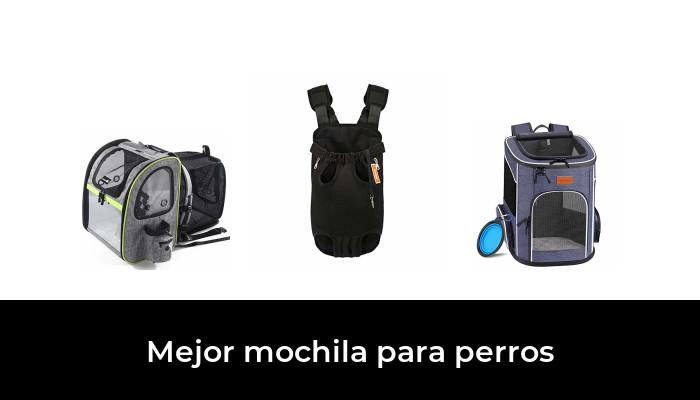The “secret” mining of gold in Cuba - Periodismo de Barrio
Until that fateful morning, that gold was mined in Aguas Claras was an open secret. Every day more than a hundred men arrived in this tiny town halfway between the city of Holguín and Gibara. They were going to bury themselves in holes 30 or 40 meters deep.
Those who lived through that stage remember that the mouths of the wells were separated by a few meters and that, more than once, the tunnels connected under the surface. Seen from the air, the vacant lot resembled a beehive with people entering and leaving the shafts, between the noise of the pulleys hoisting the full buckets, the voices of the miners, the coming and going of the helpers throwing debris... The quarry and its outskirts were the liveliest part of the whole town. And although the police made sporadic raids, after a few days off to calm things down, people always returned to work.
Until the early 1990s, the Aguas Claras gold mine had been the site's economic mainstay. Entire generations had dedicated their work to the mine. So, when the state companies withdrew and the jobs in the sector disappeared, people naturally continued to do what they had done for decades: the town and its only tradition remained anchored to the geography of a land with no other wealth than the ore veins running under the ground. For this reason, in Aguas Claras, artisanal mining was never seen as something extraordinary. It was a topic that everyone talked about without hesitation.
But in May 2018, two young miners died and four others were injured. The gallery where they were working did not collapse: their mistake was not waiting for the carbon dioxide (CO 2 ) to dissipate from the turbine used to drain the water accumulated in the gallery. On the way down, both suffocated to death. The rest of his companions were injured when they fell unconscious while trying to help them. That day, Michael* remembers, artisanal mining collapsed in the area, a business that had been prosperous for many years.
However, the uproar caused by both deaths put Aguas Claras on the map and the authorities acted drastically, as they had never done before. When the ambulances and rescue teams left, the access tunnels were sealed by bulldozer force. Then the police raids made the work unfeasible and the Holguin and national press wrote about the effects that mining practices cause to the environment. The legal consequences for offenders were also discussed, local experts were cited and figures of confiscated work instruments were given.
A year and a half after the accident, what was once a bustling work area has become a quiet place.
But Aguas Claras is not a unique case. In other places in the East of Cuba, always far away, there are men who still extract, as best they can, the ore from the rock. It is a constant battle: as a gallery is dug, the earth hides the seams of material. It is a duel that the earth always wins because, one way or another, sooner or later, the earth ends up swallowing men.
***
With his hand Jesus points to the quarry where they work: a giant cauldron of washed stone without vegetation, where the sun punishes almost all day and the shade is scarce. “Hell”, he tells me. That's what this man calls it, who, for more than a decade, has descended almost daily to 30 meters underground.
Jesús is the oldest of the four members of La Brigada, he is about 50 years old, with coarse and hard hands and a dry look. He and his companions work every day in a well in the eastern Cuban region to extract gold. Although artisanal and small-scale gold mining involves 15 million people around the world and generates about 15% of the gold that is extracted each year on the planet, this practice is illegal in Cuba: in the country the extraction of minerals Metals is reserved for state and foreign companies, and Mining Law 76 (1994) establishes the "inalienable and imprescriptible domain" of the Cuban State over all mineral resources present in the national territory. However, in the last two years, reports on illegal mining activity have been frequent in the Cuban press and in scientific circles.
As in the rest of the world, artisanal mining in Cuba is extremely dangerous due to the precarious technological and construction conditions in which it is carried out. To which is added the impossibility of accessing methodologies and construction materials that would make their work much safer. Thus, artisanal mines are a constant Russian roulette. For good measure, they are the closest thing to a grave, one that the miners dig with their bare hands.
There is no pre-established structure to excavate these holes. The tunnels twist, go up or down, widen or end up chasing the quartz in which the highest concentrations of gold are found. However, when they are deep, the wells share some characteristics: a vertical descent gallery that reaches a first landing and then branches into horizontal tunnels, humidity, lack of oxygen and overwhelming heat.
Digging a well can take up to a month, or more. It all depends on how deep you want to give it. “The biggest delay is impaling, because you have to deepen the hole and then impale it well; and then go back to give it more depth and impale again. So you repeat that until you have the necessary depth,” says Michael, who has been a miner for years and has traveled through much of eastern Cuba digging the ground. The smallest hole he has gotten into was 4 meters deep because the vein of material was very close, but it has also reached 36 meters deep.
The well of La Brigada made up of Jesús, Thomas (the leader), Ramón and Rizo (whom everyone calls by his last name) is one of the most comfortable. The entrance is a square vertical column 15 meters deep and 70 centimeters wide, where only one man can go up or down at a time. The walls of the passageway are completely impaled, a structure that serves as a ladder and facilitates access.
A few meters away, in the same quarry, there is another well and another brigade of miners, but the conditions are different. Its entrance throat is almost two meters in diameter and the stake is poor, there are almost no stairs, a good part of the descent has to be done by rope, the walls show the ground directly, the support points are distant and there is no all the men who work this hole could easily go up or down there. Thomas, the leader of The Brigade, acknowledges that the pit and the impalement say a lot about the miners and how much they care about safety. For him and his people there is nothing more important than coming to the surface at the end of the day.
As he descends, the change in temperature and air quality is evident. You have to take short breaks, or go slowly, so that the body gets used to the new conditions without subjecting it to sudden changes. Controlling your breath is very important. There are also other useful tricks: keep your brain active, think rationally, look and analyze everything around you.
The custom, among the miners, wins the pulse of fear.
Photo: Hansel Leyva
The Brigade has an unvarying routine. With "la chichi", which is nothing more than a motorcycle backpack, fresh air is pumped directly to the bottom of the mine for about 45 minutes to renew the oxygen in the galleries. No one goes down before this operation: death by suffocation is more frequent in these tunnels than by collapse. After this initial injection of air, the flow is maintained with a forge, a kind of less powerful electric fan that constantly sends fresh air. Underground the most important thing is fresh air and water to keep you hydrated while you work. The food is secondary, it even gets to be forgotten.
When there is enough air in the tunnels, someone goes down to turn on the turbine at the bottom of the mine to remove the water accumulated during the night. Drain time depends on how much has been filtered. In rainy seasons it can take more than an hour to dry the mine, or the turbine must be turned on more than once during the working day.
Most groups of miners use internal combustion turbines to drain, and this forces them to go up when they start to work to avoid CO 2 suffocation. Thomas and La Brigada devised a different system: with a small balloon of gas they created a smoke collector, coupled to the turbine exhaust and a hose that in turn connects to an extractor on the surface. This prevents CO 2 from flooding the gallery and they do not need to stop work while they drain the water.
Only when the gallery is dry do they begin the task. In every brigade, the jobs are distributed: pickers, shovelers, lifters, rubble collectors... lookouts. Although the ideal is that everyone in the group is able to do any job, that happens very rarely. Sometimes, even, there are those who prefer to repeat in hard jobs, but in which they feel more comfortable.
The pickers and shovelers are down in the mine. The first start, with chisel and hammer, the pieces of quartz. This material is found in veins that can be one to eight inches wide, or more. Regardless of the thickness, once detected there are two procedures: either the worthless stone around it is removed to release the vein, or the vein is directly trenched and the remaining stone is later removed. The shovelers are in charge of moving the rubble inside the gallery, either sending it to the surface or accumulating it in some areas of the mine. “Sometimes you have to throw away 60 buckets of rubble to get 10 cans of material out,” explains Michael.
Above, the lifter is responsible for hoisting the buckets full of rocks. This is one of the most hated jobs for miners and it is not limited to just rubble or quartz. The lifters also raise or lower the instruments, equipment, wood for impaling... Meanwhile, the dumper will launch, away from the hole, the waste rock raised to the surface. Between the two, the ventilation equipment also operates and they are attentive to the weather.
The rain cancels the operations immediately, because, in addition to flooding the galleries and wetting the impalement –which makes climbing difficult–, it is often accompanied by electric shocks. Underground, surrounded by metallic minerals that conduct electricity for miles, the miners would be in a death trap. That is why, even if the rain is not heavy, a thunderclap is enough for everyone to come to the surface.
Given the illegal nature of this work, punishable by law with large fines, confiscation of materials and belongings, or even imprisonment, the presence of a lookout is required to guarantee the safety of operations. He is usually located far enough away to be able to detect the arrival of the police early and warn them in time. No need to answer the phone, just see the lookout call for the leak to be activated.
The speed at which the entire camp is dismantled is staggering. In the escape, each member of the brigade has a specific assignment: some collect the hoses, others put the rustic wooden cover that tries to camouflage the entrance of the mine, others flee into the mountains carrying the pumping equipment and generators... The ideal is that no one remains inside the tunnels, nor that there be any trace of the presence of miners.
When the police arrive at these remote places, at least one week of forced rest is decreed among the brigades, until everything calms down and the police operation decreases. Almost always the raids against the miners are due to complaints from the forest guards, or as part of some regional raid against other illegalities. There has to be an extraordinary case, like the accident in Aguas Claras, so that the center of the operation is to eliminate sources of illegal mining.
If there are brigades working close to each other, they collaborate to minimize risks: they are aware of the direction and depth in which they dig so as not to collapse tunnels, they share the lookout, some equipment and the expenses to hire a night watchman to take care of the vulture pits. These are characters who live off the work of others and take advantage of the nights to steal material from the best wells; sometimes, in the rush for quartz, vultures will weaken the very structure of the mine, says Michael.
Ownership of a well depends on initiative. When the deposits are in no man's land, that is to say, in State land, it is enough to identify a virgin site, dig a little and declare the land as their own. That is enough for other miners to recognize the right to work it. Title deeds or other proofs are not needed; the land belongs to whoever arrives first and marks it. That's how it works.
In eastern Cuba, artisanal gold mining is a contract without signatures, a pact of words whose only guarantee is trust between those who risk their lives every day digging in underground galleries, or sneaking from the Cuban authorities.
No matter who owns it, once the work crew is formed, the members will have equal shares in the profits when the well begins to pay off. Nor will any decision be made if all the members of the brigade do not agree, no vote weighs more than another, not even that of the owner of the well.
***
After reaching the first break and advancing inside the mine, oppression coexists as they pass through narrow galleries and the certainty that everything could collapse and bury the mine and the miners forever. At 30 meters from the surface, the fear of dying takes on a physical dimension and can be felt on a damp wall or a loose beam.
In the La Brigada well, the real descent begins when the impalement of the vertical tunnel disappears and it is time to advance through passageways dug by hand into the rock, damp from the infernal heat that exists, although air is constantly pumped. Many times it is necessary to crawl between them, to press in some sections against the ground, to avoid touching the old impaled ceiling.
At one point along the way, it is necessary to hold on to a wet blue rope that acts as a handrail. Thomas warns that he must not let go.
Going down to the work zone can take three minutes, or thirty. It is difficult to calculate it. It's hard to breathe. Once there, adjusting to the pressure and low oxygen takes time, usually about 10 minutes.
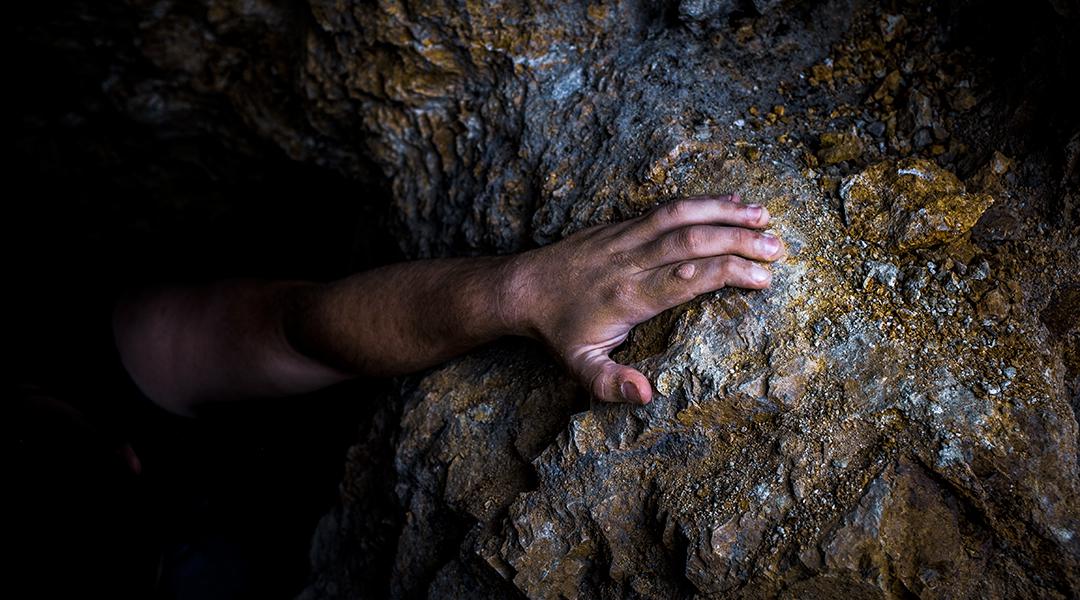
The size of the main gallery, where the work implements and the turbine are kept, allows standing. This chamber is the prelude to the site where the work to obtain quartz is concentrated, and where it is reached through a passage even narrower than the previous ones. There, with rocks propped up by piles of wood overhead, Rizo and Jesús work nonstop: with amazing naturalness they shovel mud, bail out water, clean debris, try to advance in a place where they are not supposed to be.
Photo: Hansel Leyva
In the main gallery and in the area where they work, the light comes from the light bulbs that have been installed on the walls (they are powered by a battery outside) and that give the grotto a touch of modernity. These precautions, I am told, are almost a rarity. For many miners, the measures taken by La Brigada seem like an exaggeration.
However, there are other unwritten laws that everyone obeys. One of them is that, where illegal mining takes place, nobody takes photos. This is not negotiable, since a snapshot would suffice to commit all those present. In larger places and crowded with people who do not know each other, more than one fight has started for this reason, they tell me in La Brigada.
It is such a strict rule that even underground they do not allow it, although everyone is sure that the police would never be able to identify the caves. They know this because the police arrive and chase them away for a while, confiscating what is left behind in the flight and, sometimes, setting fire to the holes to collapse them; but they never go down to the galleries.
The reluctance to photos is just a detail. By nature miners are distrustful people. They distrust the weather outside the holes. They distrust the devices with which they pump air forty meters underground. They distrust the walls that they themselves have carved out of the rock. They distrust the roof that they have propped up so that it does not collapse on top of them. But they distrust, above all, strangers.
Many of them have known each other for a lifetime: they are from the same town, they have mined together in several provinces; they have gone on a campaign together to try their luck for many days, and have returned to their homes a little less poor; they have run together through the bush when the police arrive and, sometimes, they have waited together for hours in the holes until the police leave. Constantly living outside the law and on the verge of death has forged a fraternity to which one does not belong at once. It is a trust that takes years to forge, but that allows them to place their lives in the hands of their colleagues every day.
Rizo, Jesús and Thomas have been taking turns shoveling mud for an hour when, from above, Ramón warns that there is a storm nearby and it thunders a lot. That is the password to get out of the hole. The turbine that has been draining the constantly seeping water is turned off and they start back.
Again the same narrow passage, the same blue rope, more mud all over your clothes, the climb up the narrow but comfortable wooden impalement, and finally the surface air that seems purer than ever and manages to pass for cool. the 32 degrees Celsius of temperature that scorches the stone quarry.
Everyone regrets that the afternoon ends like this. For more than three days, the Brigade has only been able to pump out water, go over the impalement of the caves where they work, and remove mud. Almost no material has been extracted.
Once outside, the material must follow a long process. After being collected, the quartz must be pounded – made into smaller stones – and dried. Transporting each can of material by cart costs 20 pesos, but that is not a concern for the Brigade, since they have something to move them on. Once dry, the rock will be crushed in a special reinforced mill, until it becomes a fine powder.
The owners of these artifacts are not miners, at least not anymore: they receive 30 pesos for each can of material that passes through their machines and the brigades usually accumulate at least a dozen of these before going to the mill. Grinding is a less risky business than going underground, but just as punishable by the Cuban authorities, who also harass the rest of the links in the production chain. Of course, one or more members of each brigade will be present while the material is being ground.
Although everyone knows the usual price, sometimes mill owners accept as payment a part of the material they have to grind. It is not the most usual, but when they know that the quartz comes from a well with a high concentration of gold, they can be negotiated with them without too many setbacks.
With the powder ready, it's time to wash. With slight variations, this step hasn't changed much in centuries. Michael explains that a device known as a racle, or cart, is used for this. Basically it is a pan mounted on two rocker arms where the powder is put and water is added so that the liquid drags the mud and leaves behind the metal powder.
Not everyone knows how to wash, says Michael. He has done it and he doesn't like it. It requires training and patience: it must be done slowly, otherwise there is a risk of throwing gold along with the mud. However, the washing is always done by a person from the brigade, it is a definitive moment of the process that is not left in the hands of strangers. There are those who earn a position within the brigades just because of their ability to pan gold.
Separated the metallic dust, the alchemy begins. Inside the container without water, quicksilver or mercury is poured – a heavy metal that at room temperature is the only one in a liquid state –, which has the property of amalgamating with the tiny gold particles and separating them from the rest of the minerals. Mercury is not legally marketed in Cuba, but is acquired from workers in state industries that use it: the cost of the product is 60 Cuban pesos for a vial of penicillin. It might not seem like much, but it is enough to process up to 80 grams of gold.
After stirring again and again, the mercury and the gold trapped by it are deposited in a very fine cloth that will serve as a strainer; it can be the fabric of an umbrella, or the pocket of a pair of nylon shorts, but it should always be as thin as possible, Michael tells me. By hand, the cloth is wrung out to remove as much mercury as possible, and what remains on the cloth is placed on a candle in a spoon or similar container.
With the heat, the remaining mercury evaporates into gases that are highly dangerous for humans, but the miners only protect themselves by covering their faces with a sweater as the only barrier. When the vapors dissipate, the gold remains “yellowish, very cool there”, says Michael without hiding how much he likes that vision.
The gold obtained, between 19 and 21 carats, will then be sold to buyers on the black market for 30 CUC per gram. For its use in jewelry, each gram of this gold must be mixed and lowered with one gram of copper and half a gram of silver, to guarantee the hardness of the alloy and take it to 10-carat gold, the cheapest of those used by the goldsmiths. Thus, from the initial gram sold by the miner, two and a half grams are obtained ready to be marketed. Each gram of 10-carat gold is currently bought in Cuba for 20 CUC.
Mercury vaporization is one of the most widespread techniques for recovering gold by hand around the world. It is estimated that in this way more than 1,400 tons of mercury are released into the atmosphere each year, which makes it the world's main source of contamination by this metal, according to information from the Global Opportunities for Long-Term Development program. (Global Opportunities for Long-term Development, GOLD) supported by the Global Environment Facility (GEF).
The same statement warns that “prolonged and high exposure to mercury inhalation damages the nervous, digestive and immune systems. […] in humans, this has been called Minamata disease […] The most notable symptoms of the disease are seizures, loss of muscle coordination, and damage to vision, speech, and hearing.”
Funds could be channeled through GOLD to countries where many artisanal miners still rely on mercury for gold extraction. In total, GEF will dedicate 45.2 million dollars to this program, an amount that could be increased to 135.1 million with the contribution of government budgets, international financial institutions and private companies. “With these funds, governments can support small-scale and artisanal businesses by creating policies and market incentives, and connecting them to international markets and supply chains that favor gold mining with techniques that use less or less. no mercury”, states the article.
Not a single penny of these funds will transform the conditions under which Cuba's artisanal miners refine gold today. Although it is no longer a secret that foci of this activity can be found from Camagüey to Las Tunas, the Cuban authorities are more focused on eliminating these practices than on creating a legal framework that allows normalizing and applying security measures to existing excavations. .
For many of the Cuban miners, this would be a desirable scenario: work without worrying about the police, buy the necessary materials to secure the tunnels, dig, process and then sell the mineral to the State itself. Buying it at the price that the miners sell it today, the cost for the Cuban State would be 933 CUC per troy ounce (standard weight measure used for the commercialization of precious metals and which is equivalent to approximately 31.1 grams), well below the $1,475.95 it recorded as market value on December 6, 2019.
The data on gold mining in Cuba are not public: although the country maintains gold mines in operation in provinces such as Villa Clara (Falcón Field) and Camagüey (Golden Hill), the Statistical Yearbook of Cuba does not report the production of this metal. However, it is notable that in its 2018 edition the Portfolio of Opportunities for Foreign Investment indicated a total of 32 offers related to gold mining in the national territory: four of them located in Holguín and among which is the area Aguas Claras-Guajabales, the site where the two young miners died in May 2018.
***
Illustration: Monkc
At the end of the day all the equipment is collected, the hoses used to extract water from the mine are dismantled and everyone starts their way back home. The Brigade hasn't ground a single can of material for more than a month. And that means that no one has been paid a cent for more than a month. In all that time, the well has only produced losses: food, transportation, fuel... Everyone in the group hopes that this will change soon.
But they only have that, hope: in artisanal mining there is never any certainty of success.
Even when they start processing the material, it won't always be a lucrative business. Adding the production costs, each can of material extracted from the gallery will only be profitable if it yields at least three tenths of a gram. With current prices, it would be 225 pesos. Subtracting only the 30 pesos to grind each can (and ignoring the 60 for quicksilver, fuel and food), the profit per can would be less than 50 pesos each, less than two dollars. Nothing, if you take into account the risk that the Brigade runs every day.
Yes, sometimes the miracle happens and someone wins the lottery by finding a quartz vein with a high mineral load, but it is very rare: the usual concentrations of gold in these rocks are low, so low that the Cuban government itself cannot decide to exploit them. In addition, when that happens, many times that money will be used to pay off the debts accumulated with work or the purchase of supplies. No one has gotten rich here, Thomas tells me sitting on the edge of the well.
However, many still cling to chisels. “The miner gets gold fever because it is a job that can give a lot of money and sometimes it does not require investment, only the work of each one. In the time that I worked on it, nobody left the hole of their own free will, ”says Michael, who for four years lived from mining and squandered most of his earnings on restaurants, hotel rooms and nightclubs.
For his part, Luis Manuel has spent half of his 32 years mining quartz underground, he came to mining thinking that it would only be for a while. But the first week he made 12,000 pesos and that was the end of the university and the desire to be a Bachelor of Sports. Now, with what he earns from the mine, he offsets the expenses on his family's farm. "In real life," he says, he is a farmer.
It is hard to define with these men what real life is for them: if it is the palpable reality of a dark and humid gallery 40 meters deep, or the theater they represent to keep a low profile before the Cuban authorities.
It's almost dark and we leave the quarry behind. I chat with Jesus as we walk down a forgotten dirt road. In this mount of the Cuban East only our conversation breaks the silence of the surroundings. Jesus is one of those who is in the gold because he sees no other remedy. Although he has worked for state companies before, even alternating them with mining, the option of returning to those jobs is not in his plans.
But he doesn't want to grow old in a hole either, as he did to his mother-in-law in these mines. He dreams of a stroke of luck that rewards sacrifice, a gold mine that allows him to make money and set up a small carpentry workshop; nothing out of this world, barely enough to live without slipping inland on calm days and mount inland when the police arrive.
Until that lucky break arrives, each morning Jesus returns, disciplined, to hell.
* The names of the interviewees and members of La Brigada have been changed to protect their identity.



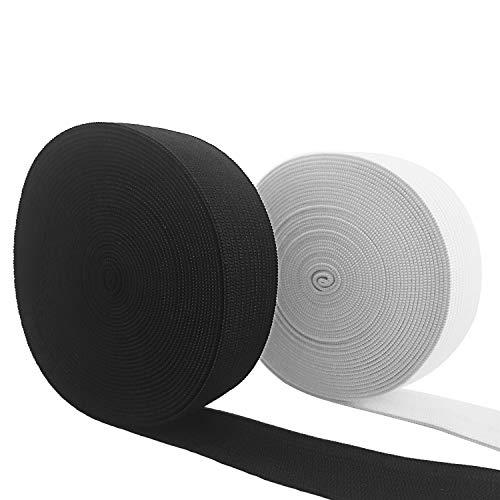
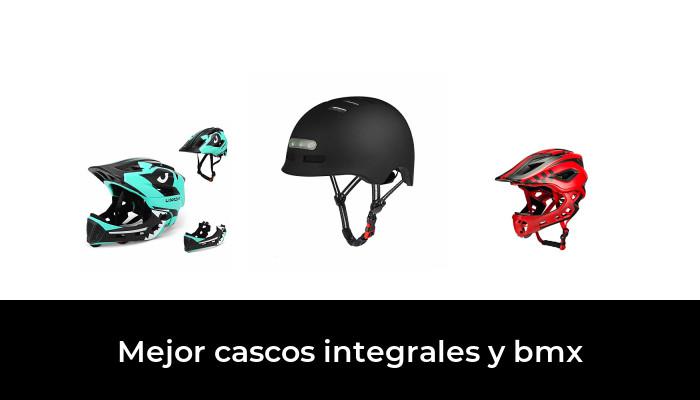

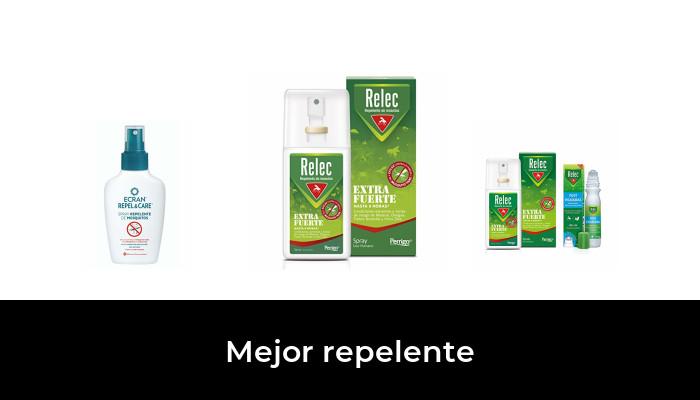
![47 best antiage nutritive cream in 2022 [based on 326 reviews] 47 best antiage nutritive cream in 2022 [based on 326 reviews]](https://website-google-hk.oss-cn-hongkong.aliyuncs.com/drawing/article_results_6/2022/2/27/1918fc37c66ad30564173e69d9df88a0.jpeg)
